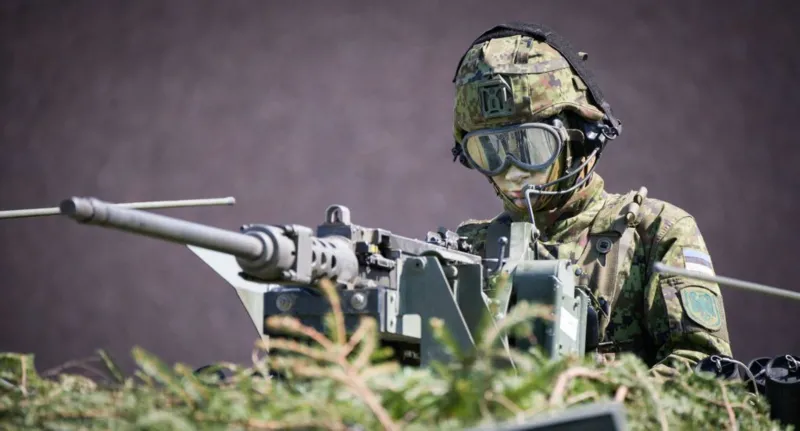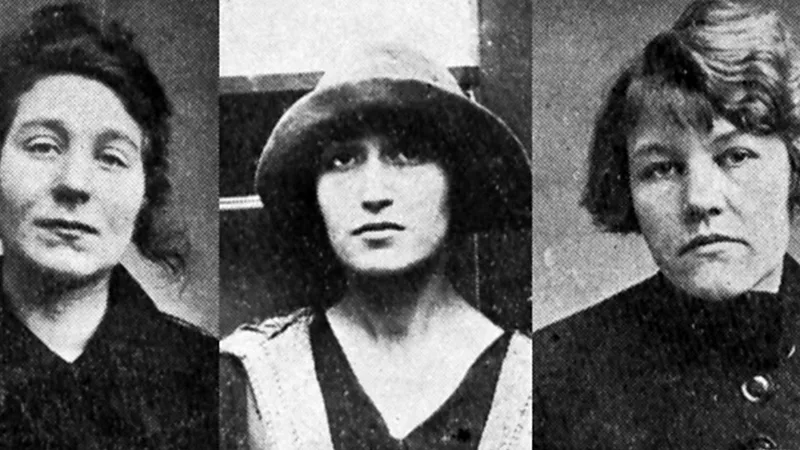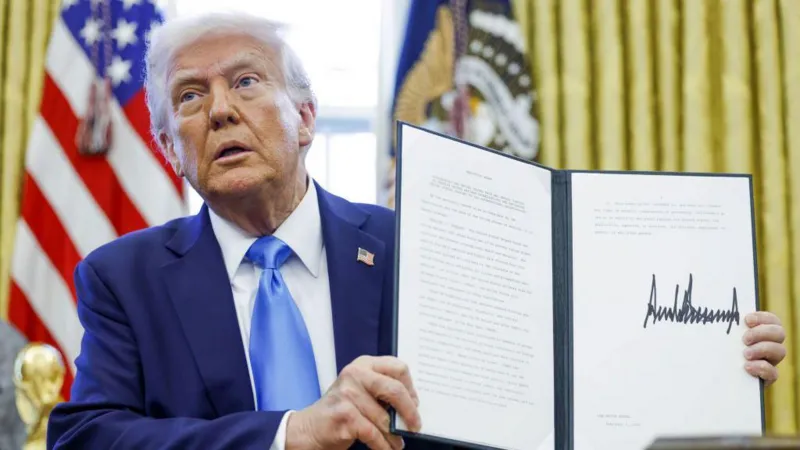We have no Plan B if Ukraine falls, says Estonia
Estonia considers itself a front-line state, a Nato member where its border guards stare across the Narva River at the Russian fortress of Ivangorod.

This tiny Baltic state, once a part of the Soviet Union, is convinced that once the fighting stops in Ukraine, President Vladimir Putin will turn his attention to the Baltics, looking to bring countries like Estonia back under Moscow’s control.
To help stave off that possibility, Estonia’s government has poured money and weapons into Ukraine’s war effort, donating more than 1% of its GDP to Kyiv.
"If every Nato country did this," says Estonia’s steely Prime Minister Kaja Kallas, "Ukraine would win."
But Ukraine isn’t winning.
Short of artillery, ammunition, air defences and most of all, troops, Ukraine is struggling to hold back the sheer weight of Russian firepower, glide bombs and massed infantry assaults that often border on the suicidal.
What, I asked Prime Minister Kallas, is Estonia’s Plan B if Ukraine loses this war and Russia’s invasion ultimately succeeds?
"We have no Plan B for a Russian victory," she replies, "because then we would stop focussing on Plan A" - helping Ukraine push back the Russian invasion.
"We should not give in to pessimism. Victory in Ukraine is not just about territory. If Ukraine joins Nato, even without some territory, then that’s a victory because it will be placed under the Nato umbrella."
Kaja Kallas is controversial. She is not the first national leader to be more popular outside their country than within.
Born a Soviet citizen, her mother and grandmother were forcibly deported to Siberia.
Now 46 and prime minister since 2021, she is one of the most hawkish leaders in Nato when it comes to blunting the Kremlin’s ambitions in Europe. That has spooked some in the White House that she risks dragging the West into direct conflict with Moscow.
Existential threat from Russia
Many Estonians are also less than happy at taxes being raised to pay for their contribution to Ukraine’s defence. But Kaja Kallas wants the West to wake up to what she sees as an existential threat from a newly aggressive Russia.
"Russia wants to sow fear in our societies," she tells us, sitting in the cabinet office in Estonia’s equivalent of 10 Downing Street, overlooking the soaring spires and ancient castle walls of Tallinn’s Old Town.
"We see different hybrid attacks in many parts of the EU."
"Hybrid attacks", also known as "sub-threshhold" or "grey zone" warfare, are hostile actions suspected of being carried out by an adversary such as Russia where no shots are necessarily fired, no-one is killed and blame is often hard to pin - yet the damage can be extensive.
An example, still unsolved, would be the mysterious underwater explosions that blew up the Nordstream gas pipelines beneath the Baltic Sea in 2022. Another example is the recent allegation of Russian electronic interference in flights passing close to its exclave of Kaliningrad on the Baltic coast.
In its latest annual report, Estonia’s internal security service Kapo quotes the example of last autumn when hundreds of schools in Estonia and other Baltic states were sent emails claiming bombs had been placed in school buildings.
"Such threats," says the report, "aim to create psychological and emotional tension by targeting the most vulnerable – threatening the safety of children".
'Denial is key to strategy'
So just how vulnerable is Estonia to a future Russian invasion?
"We have to prepare for war so that we don’t have one," says one Nato officer, speaking on the sidelines of Nato’s Exercise Steadfast Defender.
Down on Estonia’s southern border with Latvia, ageing British Challenger 2 tanks and other 1980s-era armoured vehicles lurch over farmland, belching exhaust fumes into the clear spring air.
Russia’s full-scale invasion of Ukraine in February 2022 was something of a wake-up call for the Western alliance. It made Nato chiefs realise that they needed to significantly beef up their military presence on Europe’s eastern flank if they are to deter any future Russian invasion.
Today the UK leads a 1,200-strong battle group based in Tapa, northern Estonia, and composed of tanks, infantry, artillery, drones and a company of France's elite mountain infantry.
"The key part of this strategy of denial," says Brigadier Giles Harris, who commands UK forces here, "is to make sure we have enough forces built up in time to create more of a deterrence".
I point out that 1,200 troops does not sound like a lot when the one big lesson from the current conflict in Ukraine is that mass matters. Russia may have poor tactics and equipment but it can field such vastly superior numbers of men and ammunition that it is often able to overwhelm Ukraine’s defences.
"Your observations that one battle group isn’t enough would be a fair one a few years ago," he replies. "But our new plans see us reinforcing at brigade scale [3,000-5,000 troops] in advance of even a short, small-scale incursion [by Russia]."
"We have a formation at high readiness in the UK... to get heavier forces here in time... and it’s a complete step change from where we were before."
A company from France's elite mountain infantry has joined the 1,200-strong battle group in northern Estonia
The British forces based in Tapa, and their Estonian partners, are keeping a close eye on what’s happening in Ukraine.
"It’s a window into the tactical deployment of Russian troops," says Brig Harris. "We now see our training here in Estonia far more as a mission rehearsal specifically to fight the enemy we see playing out in the south [Ukraine]."
So ultimately, I ask him, given the setbacks Ukraine is currently experiencing, largely due to a shortage of ammunition and manpower, is Britain’s commander here confident that a Russian incursion into Estonia would be repelled successfully?
"Absolutely," he replies, without hesitation. "More so now than ever before."
-bbc







